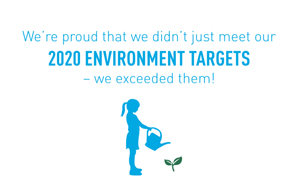Click here for our press image gallery
About Tate & Lyle PLC:
Supported by our 165-year history of ingredient innovation, we partner with customers to provide consumers with healthier and tastier choices when they eat and drink. We are proud that millions of people around the world consume products containing our ingredients and solutions every day.
Through our leading expertise in sweetening, mouthfeel and fortification, we develop ingredients and solutions which reduce sugar, calories and fat, add fibre and protein, and provide texture and stability to food and drink in categories including beverages, dairy, bakery, snacks, soups, sauces, and dressings.
Tate & Lyle recently acquired CP Kelco, a leading provider of pectin, speciality gums and other nature-based ingredients to create a leader in mouthfeel, significantly enhancing our solutions capabilities. Following this combination, we now have more than 5,000 employees working in around 75 locations in 38 countries, serving customers in more than 120 countries. Science, Solutions, Society is our brand promise and how we will achieve our purpose of Transforming Lives through the Science of Food. By living our purpose, we believe we can successfully grow our business and have a positive impact on society. We live our purpose in three ways, by supporting healthy living, building thriving communities and caring for our planet.
Tate & Lyle is listed on the London Stock Exchange under the symbol TATE.L. American Depositary Receipts trade under TATYY. For the year ended 31 March 2025, and on a pro forma basis which assumes for illustrative purposes that the combination with CP Kelco took place on 1 April 2024, revenue for the enlarged Tate & Lyle Group would have been £2.12 billion. For more information, please visit www.tateandlyle.com or follow Tate & Lyle on LinkedIn, X (Twitter), Facebook or YouTube

Our purpose
Our purpose of Transforming Lives Through the Science of Food guides every action we take and every decision we make. Learn about the three pillars of our purpose.
